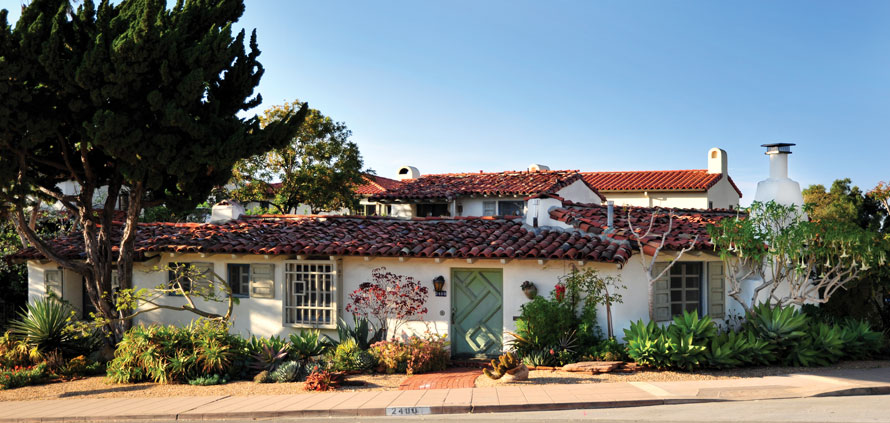|
 GEORGE W. MARSTON, a prominent civic leader, philanthropist and the developer of Mission Hills, spotted May’s talent early on. He gave May several residential lots to build on in the Presidio Hills section of Mission Hills. “He sold and I built four or five houses in the subdivision as a result of his generosity,” May recalled in the early 1980s. Among these was the home of Alexander and Nancy Highland on a prominent, gently curving corner.
GEORGE W. MARSTON, a prominent civic leader, philanthropist and the developer of Mission Hills, spotted May’s talent early on. He gave May several residential lots to build on in the Presidio Hills section of Mission Hills. “He sold and I built four or five houses in the subdivision as a result of his generosity,” May recalled in the early 1980s. Among these was the home of Alexander and Nancy Highland on a prominent, gently curving corner.
Built close to the street, this hacienda rambles along its curved lot, slowly unfolding picturesque architectural features – windows behind grilles, wooden doors with a raised zigzag pattern, a shapely chimney – to anyone passing by. It is an especially good example of making the most of a site and the quality that May called “ground contact.” In other words, the house seems to grow directly out of the earth, but to a limited height due to the visual weight of the heavily rusticated tile roof.
Closer inspection reveals a two-story rear section of the house with a romantic balcony overlooking the courtyard. This home is the first home in which May utilized a second story, he only built a small number of Monterey style homes.
Alexander Highland, May recalled, “looked at houses around town, and then he hired me to build a house in Presidio Hills. ... He built the biggest house I had ever built up to that point. ... The building permit was taken out for $10,000,” May said, adding that he thought it was the most expensive permit issued in San Diego at the time.
Inside the hacienda, connected rooms follow angled wings that fan out and flow into each other through archways and doorways, with an occasional step up or down. This lineup is reinforced and the rooms are expanded by the furnished breezeway, which was enclosed by a previous owner. Original oak floors with decorative pegs alternate with newer tiled floors; the exposed wood beams and ceilings have been painted white.
The brick paved corredor embraces the courtyard, where previous owners added a pool and additional paving replaced lawn. A variety of succulents and other plants selected by the owners cast dramatic shadows against the undulating stucco walls and are in perfect harmony with the architecture.
In 1998, the Highland House became the first home designed by May to be listed on the city of San Diego’s Historic Register.
“I’ve gone by and looked at it,” May recalled, referring to his habit of visiting former clients and their homes. “It really has stood up beautifully.”
|



